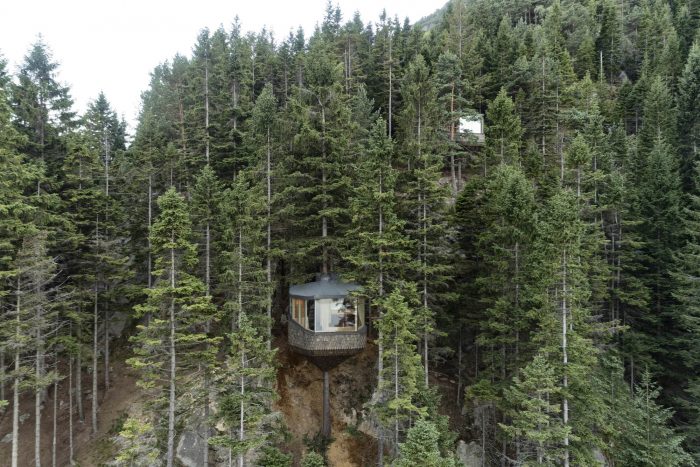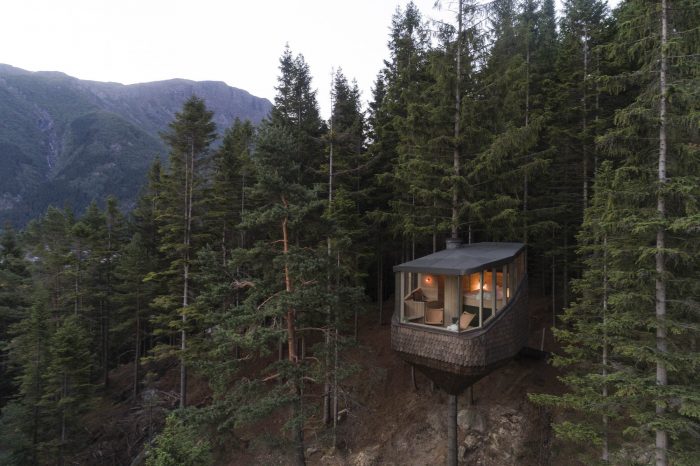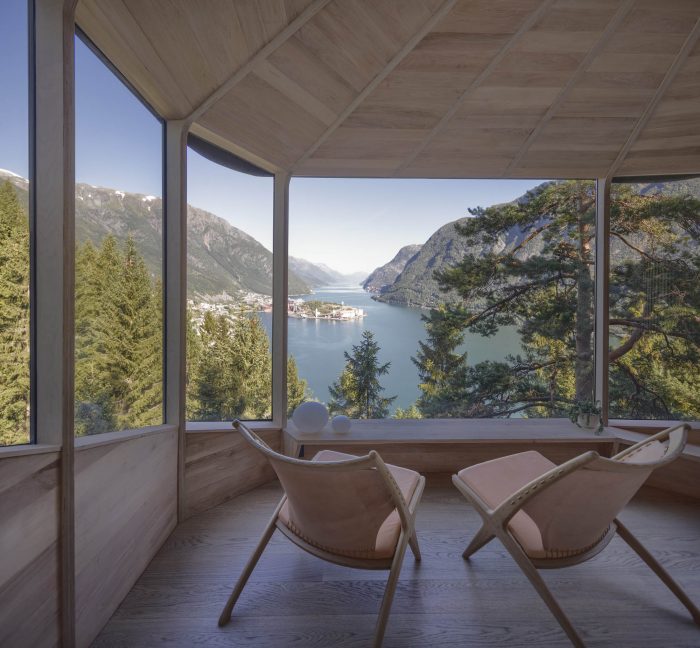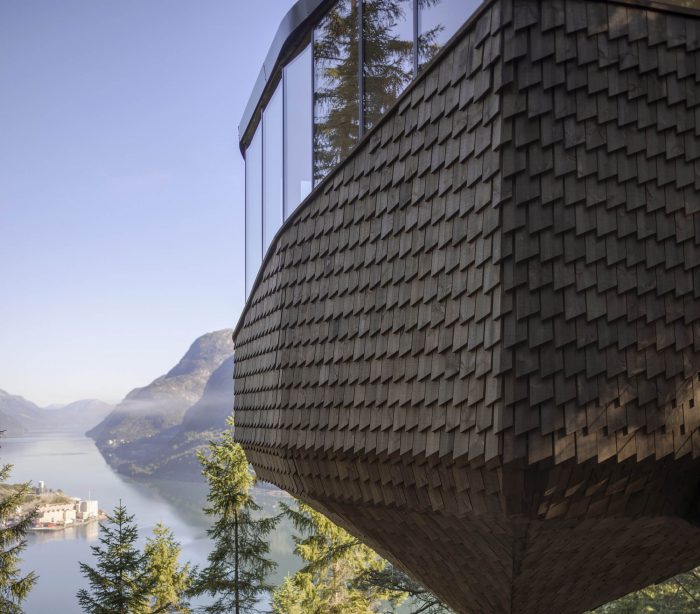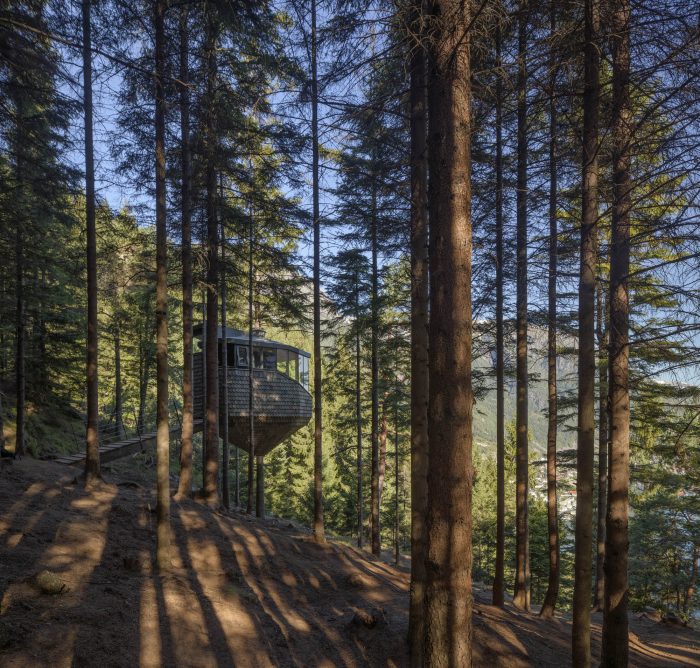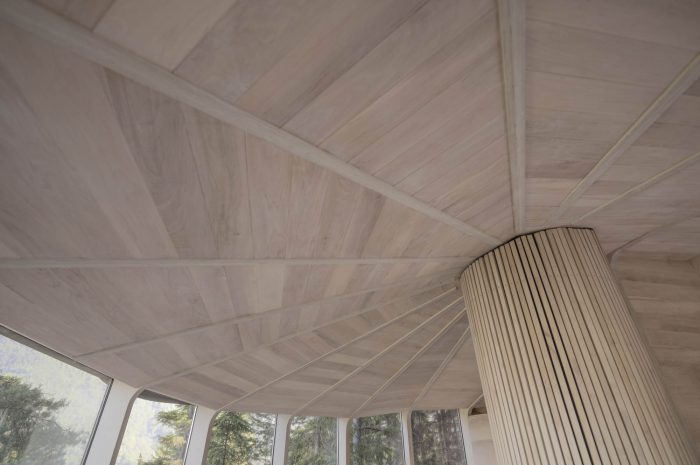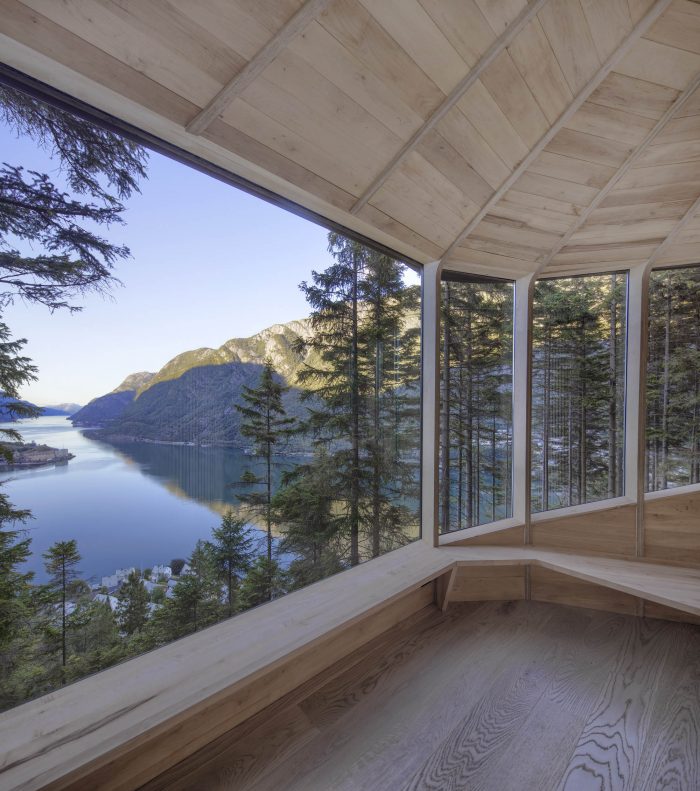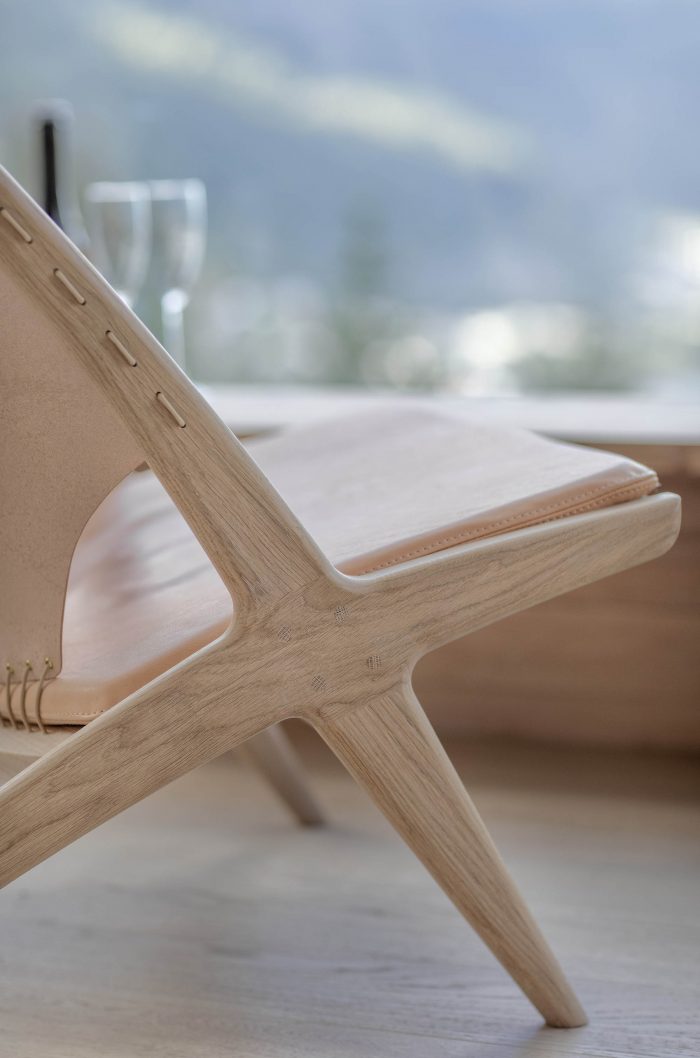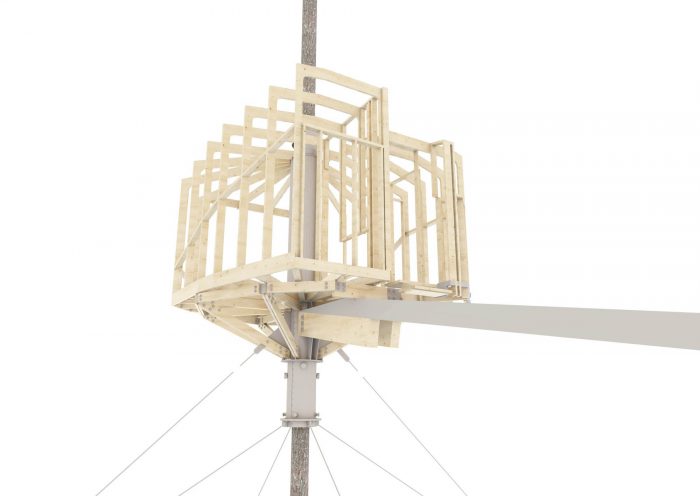源于客户希望创造一个独特的空间体验,与攀爬和探索树木的普通和非凡的感觉相联系,我们的目标是创造一个真正体现居住在大自然中的意义的空间。
Stemming from the client’s wish to create a unique spatial experience that connects to both the ordinary and extraordinary sensation of climbing and exploring trees, our aim was to create a space that truly embodies what it means to dwell in nature.
这个小项目有几个挑战性的方面。最具挑战性的部分是我们为自己设定的前提。能够创造一个完整的小屋,只由一棵相当狭窄的树支撑,而不需要额外的柱子或使用几棵树。其次,如何在一棵生长的活树周围创造一个气候化的房间。此外,一个相当不寻常的建筑申请、政府批准和暖通空调解决方案也是挑战。
There were several challenging aspects of this small project. The most challenging part was the premise we set ourselves. Being able to create a complete cabin only supported by one quite narrow tree, without additional columns or using several trees. Secondly how to create a climatized room around a growing, living tree. Also, a rather unusual building application, governmental approval, and HVAC solutions were challenging.
小屋是围绕着一根钢管建造的,钢管被切成两半,然后用4个穿透性螺栓将其重新连接到树的周围。这成为一个刚性的 “骨架”,以此来建造小屋的其他部分。我们用桥和两根钢丝将树水平固定,这样所有的重量只从树干上垂直向下,没有偏心负荷。在骨干周围,空间由双胶合板肋骨构成,呈放射状,界定了封闭的空间。
The cabin is constructed around a steel pipe, cut in halves, and then attached together again around the tree with 4 penetrating bolts. This became a rigid “backbone” to build the rest of the cabin from. We use the bridge and two steel wires to fix the tree horizontally so that all the weight only goes vertically down the trunk and no excentric loads. Around the backbone, space is constructed by double plywood ribs in a radial shape which defines the enclosed space.
承重肋骨的深度成为巢穴周围的绝缘层。在外面,小木屋有一层心材松木瓦的保护皮,随着时间的推移,风化成与周围森林的自然光泽融合在一起。在内部,房间里覆盖着黑桤木的面板,这给空间带来了一种精致、温暖的氛围。
The depth of the load-bearing ribs becomes the insulating layer around the nest. On the outside, the cabin has a protective skin of shingles of heartwood pine, which weather over time to merge and blend with the natural patina of the surrounding forest. On the inside, the room is covered with panels from black alder which gives the space a refined, warm atmosphere.
奥达上方哈当厄尔峡湾周围陡峭的森林山坡是两个Woodnest树屋的所在地。建筑是对场地本身的地形和条件的具体回应。每个树屋都是从大自然中精心打造出来的,它们被悬挂在离森林地面5-6米高的地方,用一个钢圈固定在一棵活松树的树干上。
The steep forested hillsides around the Hardangerfjord above Odda is the location of two Woodnest treehouses. The architecture is a specific response to the topography and conditions of the site itself. Inextricably crafted from nature, each treehouse is suspended 5-6m above the forest floor and fastened with a steel collar to the individual trunk of a living pine tree.
Architects: Helen & Hard
Area: 15 m²
Year: 2020
Photographs: Sindre Ellingsen
Manufacturers: aaneslandfrabrikker, nolimitation
Lead Architects: Reinhard Kropf, Dag Strass, Simon Bauman
Structure Engineer:Nordplan, Oddvin Myklebust
City:Odda
Country:Norway




